A Korean BBQ? Is that like a South African braai?
Well, if you classify a BBQ as meat on a grill, then yes it is. However, this and the fact that both cannot be enjoyed without a beer in hand and good company to share it with are the only similarities between a Korean BBQ and a braai!
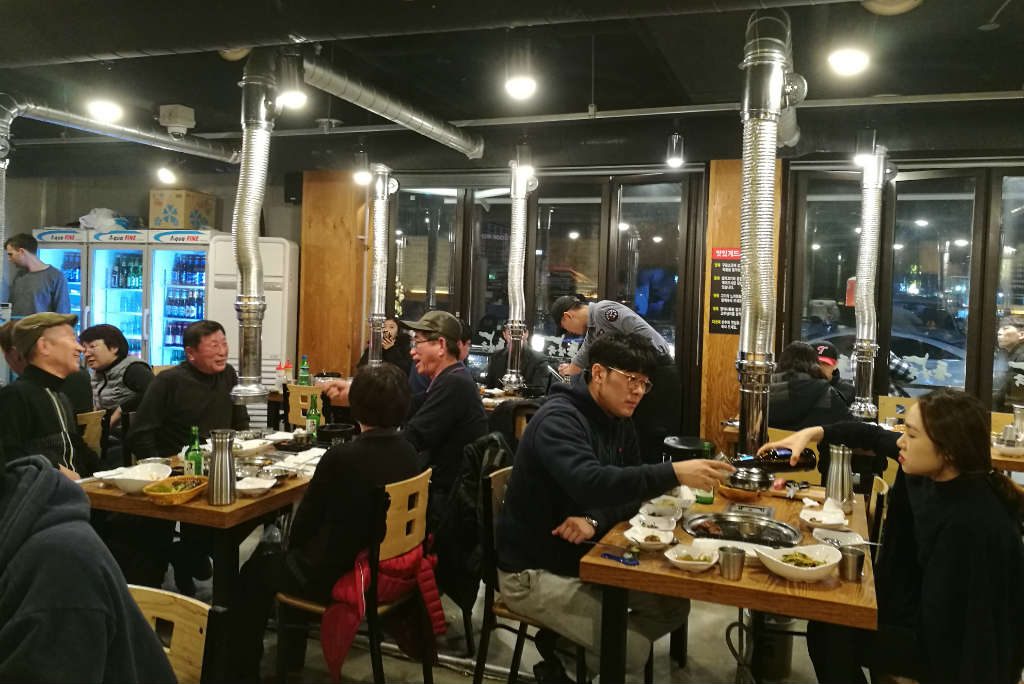
Adapting to the Korean way
After moving to Korea not only did I have to adapt to the new living standards, but also the unfamiliar food culture. I spent my first few weeks in Korea trying to make out what sort of meal the pictures on the menu were.
Going for that “surprise” dish is always a hit and miss, and for me, my first few attempts were ALWAYS a miss.
I quickly learned that most Korean meals have seafood in them and I was not impressed.
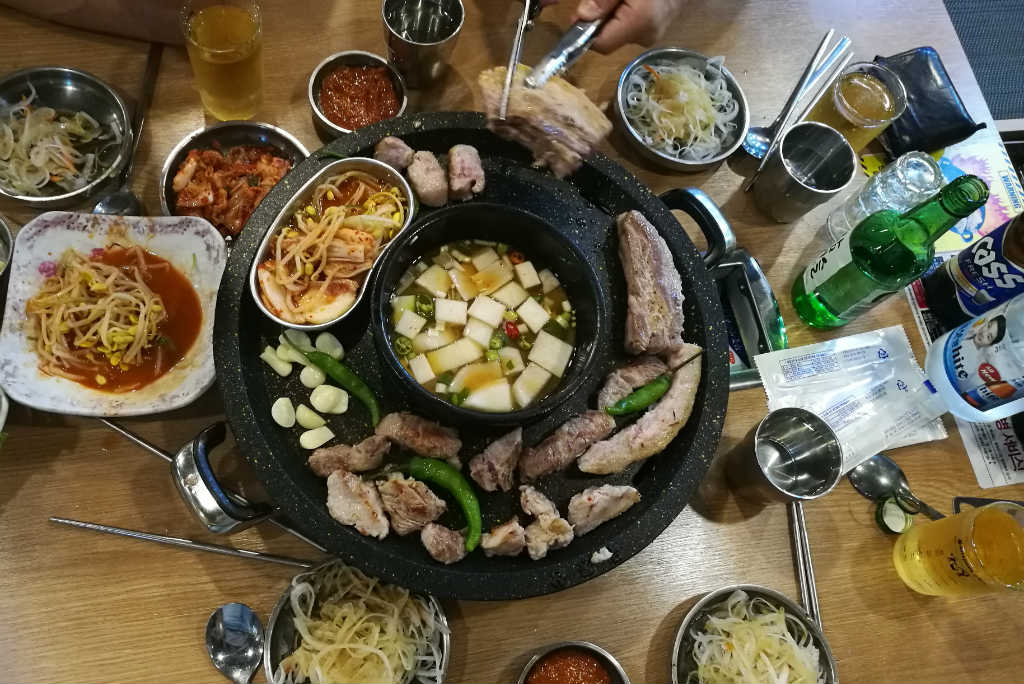
Important Things to remember before having a Korean BBQ
Firstly, when you’re looking for a proper Korean meal, you want to go to a place that’s popular with the locals and not the tourists. (So remember this when planning your South Korea itinerary!)
You’ll leave with an authentic experience, as opposed to a convenient, more westernized one.
Secondly, no Korean BBQ is complete without Soju. Bottom line.
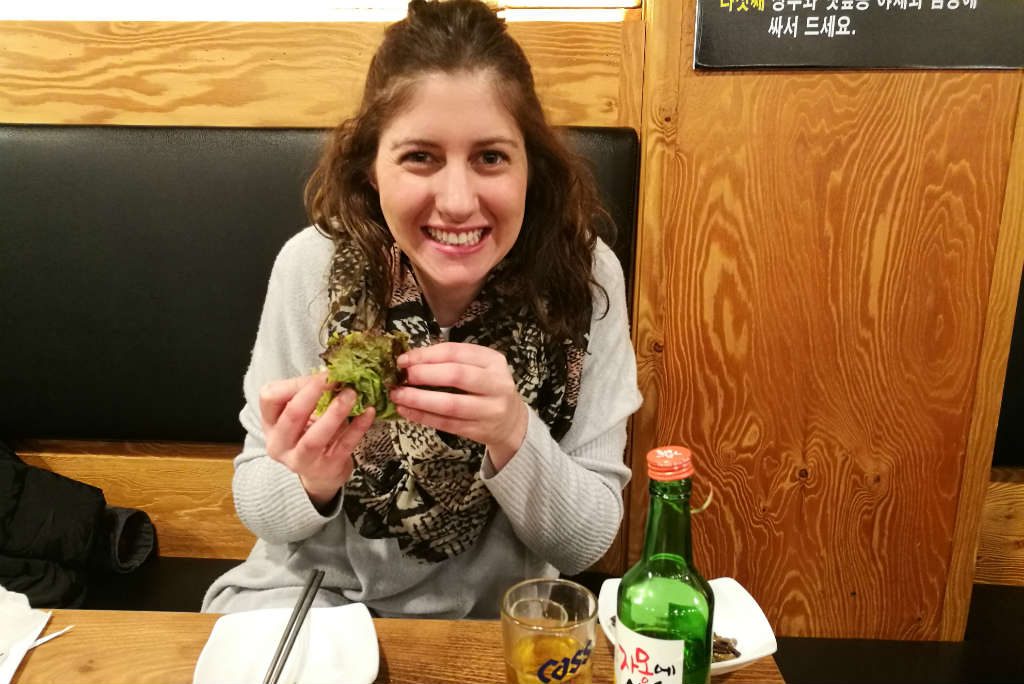
Soju and Korean BBQ
Soju is Korea’s unofficial national alcohol. It’s a distilled, vodka-like, rice liquor that’s commonly taken neat in a shot glass. And you can’t go for a Korean BBQ and not have soju!
The side effects include but are not limited to, a sudden rise in energy levels with an increased sense of self-confidence which will have you dancing like Michael Jackson in no time.
Other effects that have lead to my love/hate relationship with the infamous beverage include memory loss, confusion, and quite possibly the worst hangover you will ever experience in your entire life.
So, why do they drink it (and why am I encouraging you to as well?). Well, it’s fun and festive, and tradition in Korea.
Oh, and did I mention how cheap it is? $2 for a bottle! So if you’re traveling to Korea on a budget, it’s a steal.
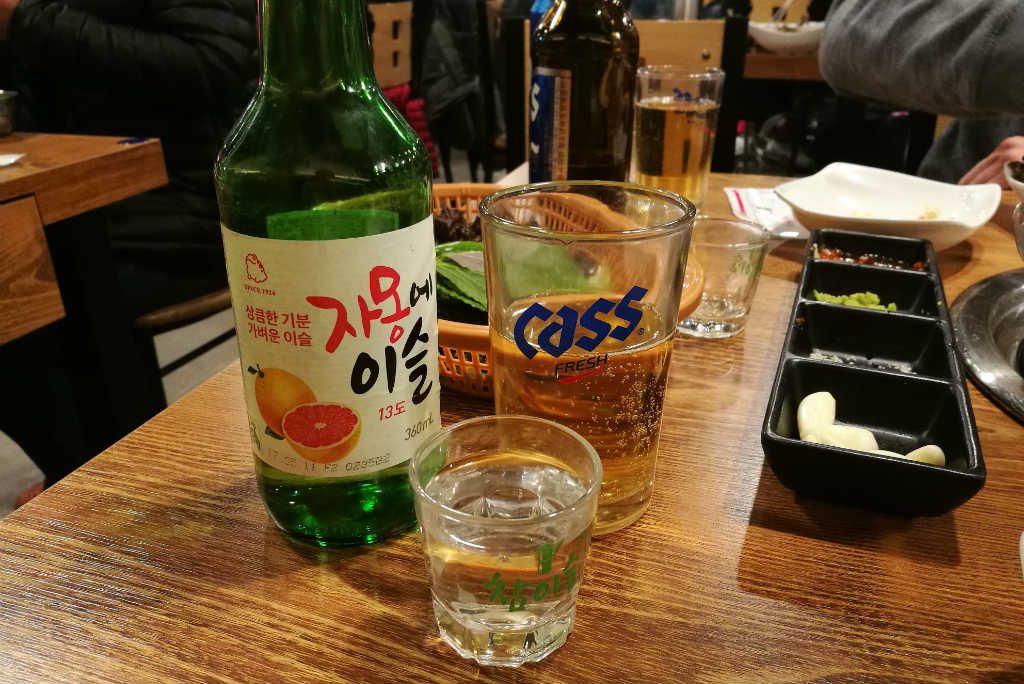
10 Signs that you’re at a Korean BBQ restaurant
1. Banchan (side dishes)
Small sides are served with every Korean BBQ and this is one of the many things I love about Korea. The moment you sit down you will receive a variety of side dishes to share.
These are different at every Korean BBQ restaurant but generally include lightly seasoned vegetables, assorted kimchi (fermented cabbage), seasoned sprouts, onion salad, and a soup if you’re lucky.
The best part is that you can get unlimited refills.
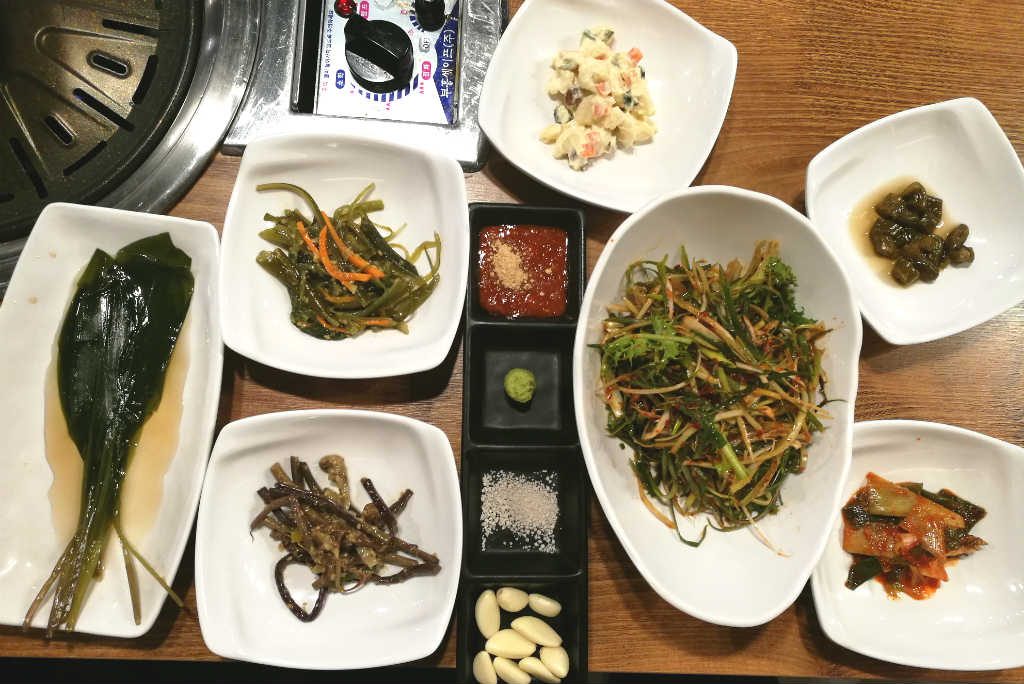
2. Most Korean BBQ restaurants will have the grill built into the table with an extractor pipe above each table.
But sometimes you’ll have a hot plate on a gas burner. Either way, it’s fantastic!
3. There’s a “Call” bell on your table.
This is pretty ingenious and I’m not sure why we don’t have it back home in South Africa!
When you need something, press the button and the waiter will be there promptly. And no, it’s not rude.
This allows for quick service to customers without invading their privacy. Alternatively, you can shout “yogiyo”, which means “excuse me”.
Read more: The Ultimate 7 Day Seoul Itinerary
4. No knives and forks.
Need to cut your meat? Well, that’s what the scissors are for!
The chopsticks, spoons, and serviettes are usually in a box on the table or in a drawer under it. There are no knives, and you’ll be lucky if you’re offered a fork.
This is how you eat all the best food in Korea and unfortunately (or rather, fortunately), you’re going to have to get used to it.
5. You always get a bottle of water for the table.
Water is served with every Korean BBQ. And you don’t even have to ask for it!
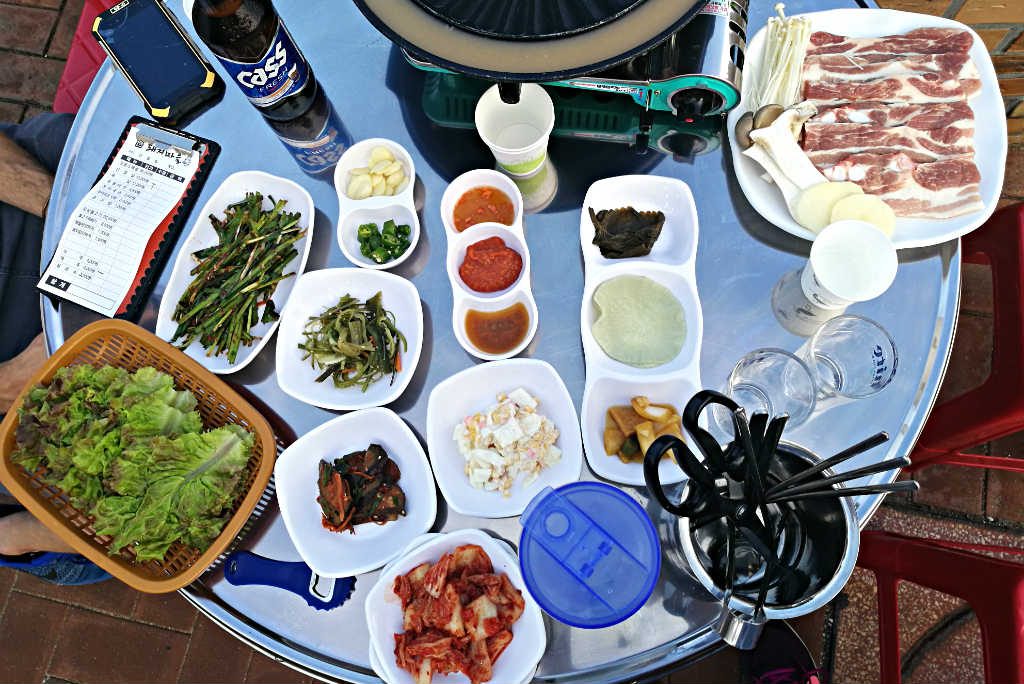
6. Service.
Koreans may offer you additional items to accompany your Korean BBQ, free of charge.
This is called “service” and could be a complimentary soft drink, stew or dessert.
It’s free and it’s wonderful!
7. Wet napkins are given to you before your Korean BBQ to clean your hands.
This was strange to me as I’m used to cleaning my hands with a wet napkin after the meal.
8. Korean culture places a lot of emphasis on sharing and the same applies to their food and drinks.
Food and beer are ordered for the table and you share them amongst each other.
Hence I love the food culture in Korea. It’s fun and engaging, and when you throw Soju into the mix, it’s even better!
If you’re traveling alone and trying to order a Korean BBQ for 1, this can be a problem as most places require you to order for at least 2 people.
Also, they may only have bigger portion sizes available that cater for two people. And unfortunately, “doggy bags” are not a thing so you can’t take the leftovers home with you.
Read More: 24 Strange Things About Korea
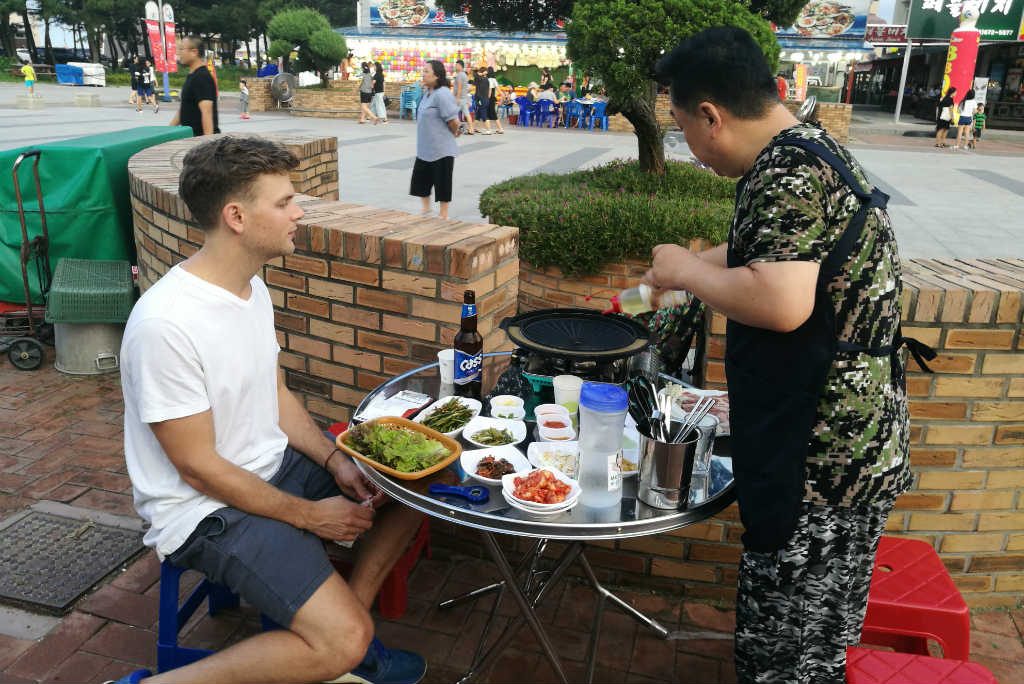
9. No tipping for BBQ’s in Korea.
Staff are paid by the employers and so no tipping is required. Tipping can actually be offensive in Korea.
You also don’t wait at the table for the waiter to bring the bill. When you’re done with your Korean BBQ, you simply get up and go to the front desk where you settle the bill.
10. Koreans go for the “all-in-one” meal, not the separate, multiple courses as preferred by Westerners.
There are no starters, mains courses, and desserts. Everything is brought to the table at the same time and dessert is not commonly served in Korean restaurants.
How to eat a Korean BBQ
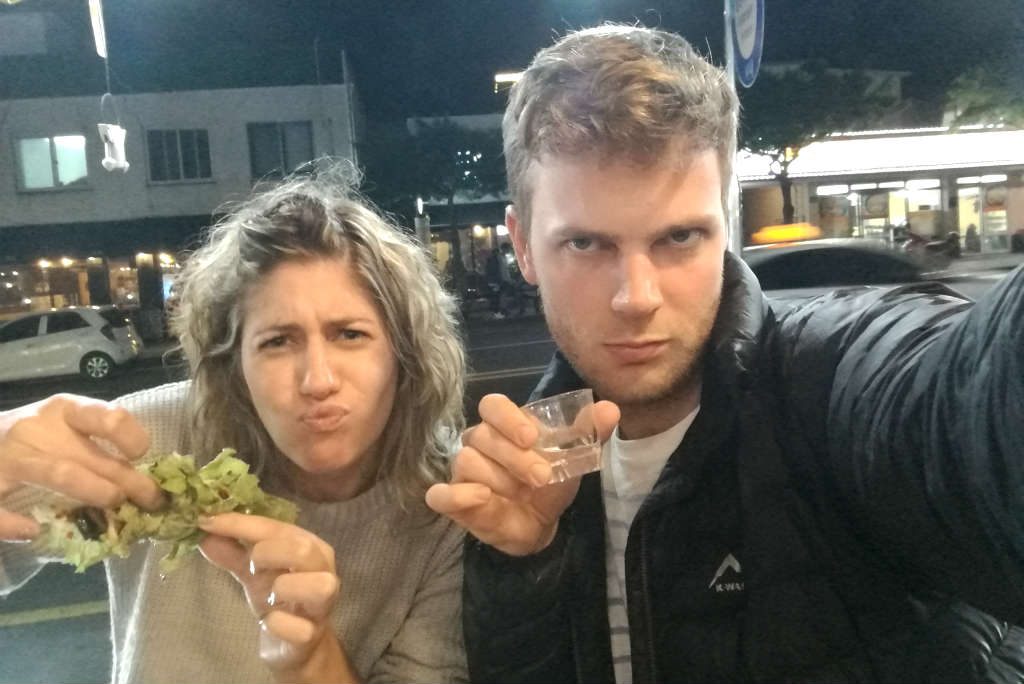
1. Order your Soju and beer (Maekju)
First thing you need to do – order your drink!
2. Try to decipher the Korean BBQ meat options available
I have spent countless times leaning over the menu with my phone and Google translate in hand trying to figure out what’s what.
I find that samgyeopsal (pork belly) is the most common cut, with most BBQ restaurants serving it. It’s generally cheap, yet tasty and delicious!
Thinly-sliced cuts of beef brisket (chadol bagi) are also popular and galbi (pork rib) is one of my favorites.
I have recently discovered moksal (pork neck) and there is no turning back. It is absolutely delicious with a deep flavor and is not as fatty as samgyeopsal.
The portion sizes vary between 100-200g so start off by ordering 1 portion per person and you can order more as you go.
Also be on the lookout for the “all you can eat” Korean BBQ options.
Costs for a Korean BBQ range from 9 000 – 15 000 won ($9-$15). It is one of the more expensive meals in Korea, but every bite is most certainly worth the price tag attached to it.
Read More: 10 Things You Need To Know About Jimjilbangs In Korea
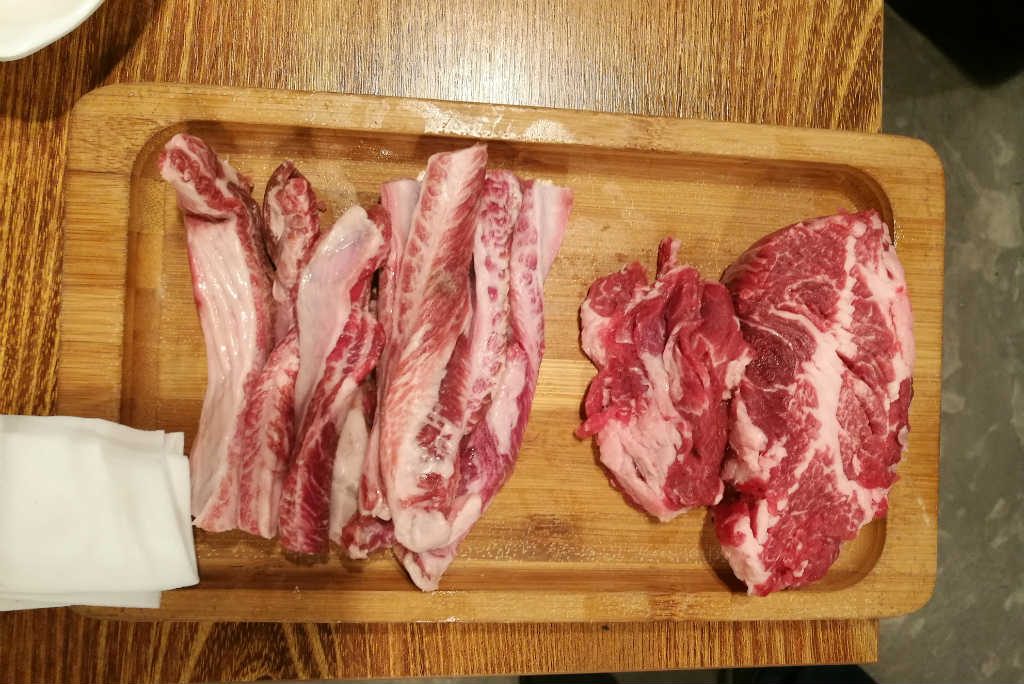
3. Sides (banchan) will arrive
Several side dishes are delivered to the table. Most of the time I don’t quite know what they are, but I tuck in any way!
4. Time to prepare your Korean BBQ meat
Your meat will arrive on a side plate, along with tongs and scissors.
No, you don’t wait for a waiter to prepare your meat for you – It’s all DIY!
Take the meat as is and put it on the grill. Flip it over and once it’s browned, use the scissors to cut it into bite-size pieces.
Let them cook a bit more, then move the cooked meat to the side of the grill and Viola… your meat is done!
I usually add the garlic and chillies to the grill and cook them lightly, but most Koreans give me a funny glare when I do this as they prefer to eat them raw.
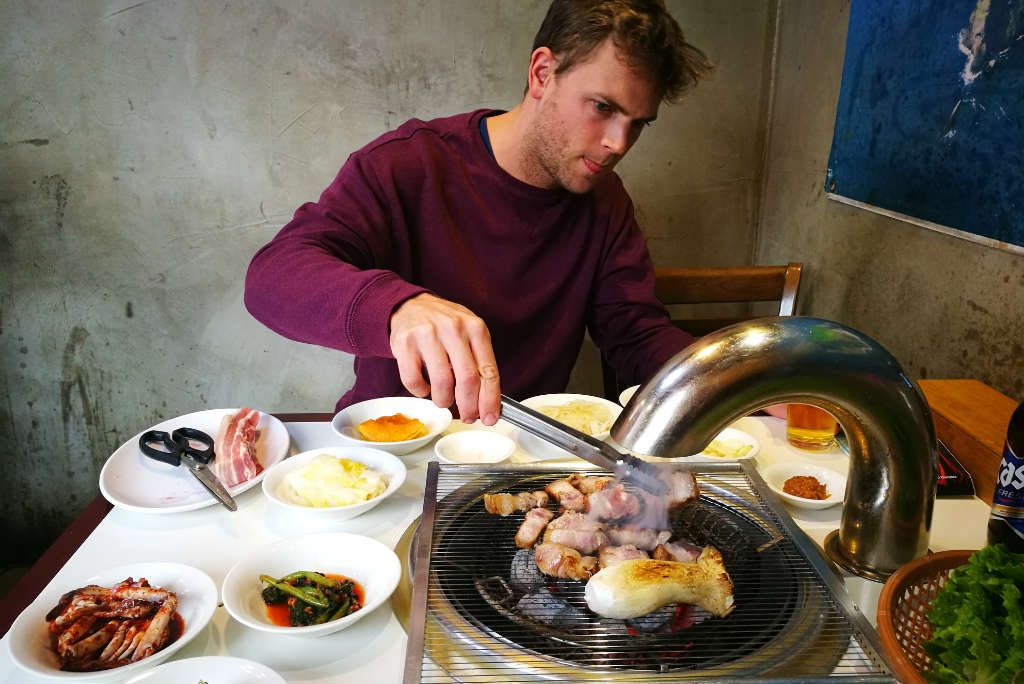
5. How to serve a Korean BBQ with lettuce
Put it all together – the “I’m hungry and want everything” method!
One of the best ways to eat a Korean BBQ is in the form of a lettuce wrap (you may also be given sesame leaves).
Place a lettuce leaf in one hand and apply some Ssamjang (fermented bean paste) to the base.
Add one or two sides to the leaf as well as the garlic and chillies. I sometimes fry the kimchi before adding it, depending on the grill.
Last, but not least, take a piece of the meat from the grill, dip it in the sesame oil and salt mixture and add to the leaf. Some restaurants may not give you the sesame oil mixture, so be sure to ask for it as it is delicious.
Wrap the lettuce leaf together into a ball and you’re good to go!
The best part about a Korean BBQ is that you can’t really mess it up! Overcook the meat, no problem, just throw it in a lettuce leaf and add some kimchi.
Read More: 11 Best Ski Resorts in Korea
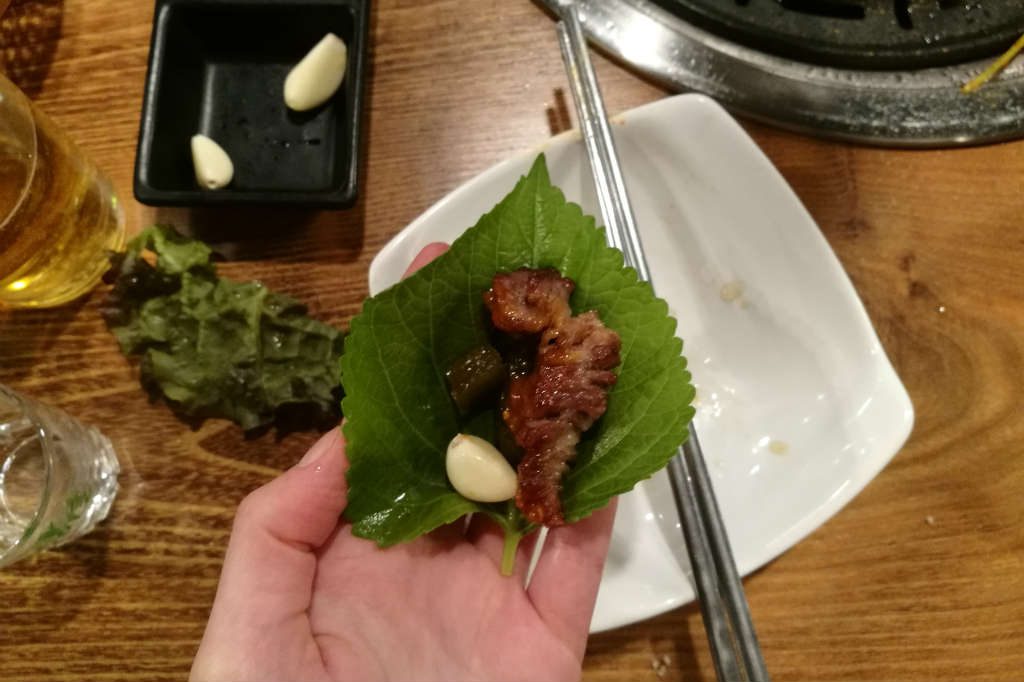
Do I classify myself as a Korean BBQ pro
I have come a long way since my first taste of a Korean BBQ on Jeju Island where I was treated to their famous black pork Korean BBQ. This meat was unbelievably tender and is a specialty dish on Jeju Island.
Thinking back to my first Korean BBQ experience makes me cringe. I sat there in a panic because I wasn’t sure what to do with this big piece of meat whilst it was on the grill. I Googled “How to eat a Korean BBQ” numerous times as the waiter had left us, obviously assuming we knew what to do!
This is why I love traveling and encourage everyone to step out of their comfort zone. Being open to different cultures allows you to discover new passions and new traditions.
READ MORE: INSIDE MY APARTMENT IN KOREA
Korean BBQ’s in Korea
The Korean food and restaurant culture are so different to anything I’m used to, but I love it. And no trip to Korea is complete without eating Korean food.
I even tried my hand at making my very own homemade Korean BBQ. It was good, but not nearly as great as having it in a Korean restaurant.
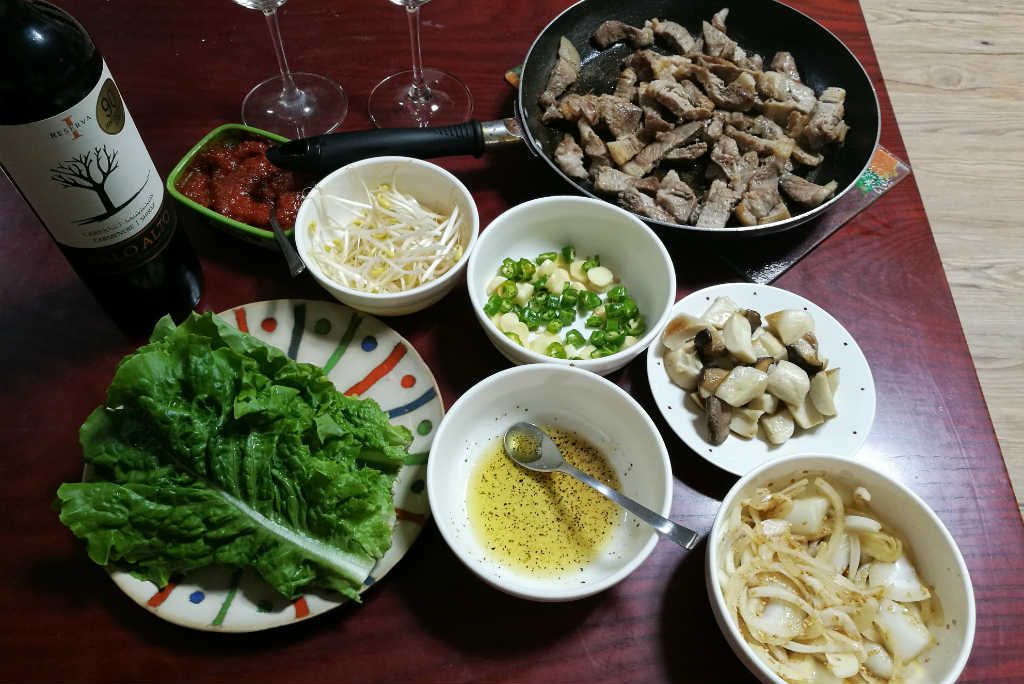
Planning a trip to South Korea? These posts may be helpful!


I am salivating want to travel to Korea for that BBQ and rice wine. I so enjoyed the read. Learnt so much. Thank you.
Thanks for the tips! Ordering food by the pictures on the menu can turn out to be an interesting experience as well, haha.